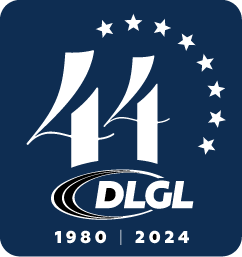Collateral benefit of the pandemic: widespread revolution in the HCM software procurement process: Virtual Demos
12 reasons why it is a much better process for the purchaser and hence the vendor.
In the mid 1990s, DLGL was the first and lonely voice to call for the use of scenarios in the selection process, which became an ubiquitous practice circum 2010. It took a long time.
Now, DLGL is calling for Virtual Demos/Scenarios, that the pandemic made ubiquitous in no time flat, to be the new norm. With no going back. And the benefits are great.

Typical demos/scenarios, when they have reached the short list step, will gather 10 to 20 client experts, typically very experienced, hundreds of years of education and knowhow; with the purpose of examining very sophisticated mega software, tens of modules each representing very deep and specific areas of expertise, as designed by great numbers of specialists on the supplier side to represent best business practices, including those jointly devised with a great number of installed clients and their experts.
In the past, all this conversation was typically channelled via a sales representative, tasked with understanding all the subtleties of the needs of large diverse corporations, and knowing and explaining all the intricacies surrounding the mega software designed to meet them, 5,000 data elements, thousands of screens, millions of lines of code. Mission impossible.
In virtual demos/scenarios made possible by the overnight availability of technologies forced by the pandemic, it becomes economically possible for the supplier to bring to the table four, five or more experts to interact expert to expert. A quantum leap in the quality of the communication.

In face of the single person mission impossible limitation, many subjects get derailed by: I would need to consult our experts, I’ll be back, or the worst of all: “Trust us, we do Worldmart, so we can do you.”
Now, thanks to having all the right people around the table, there is no reason to be denied a complete and reasonable answer, with proof, especially in the scenarios phase.
Additionally, with multiple people sharing presentation duties on the supplier side, those in wait mode can go explore the details of a more complete answer on a previous item. And be back in the same meeting with the best answer.

If some very specific difficult subject pops-up, it is easy for one of the attendees on the supplier side to fetch another expert, or the Client Executive of a similar client, and bring them on-line for 10 minutes. A great number of people may be asked to be on stand-by on that basis, with minimal disruption, but great contribution if and when called upon.

It is easy and widely used to have experts of a specific topic go off-line in a chat, while staying on-line for the core meeting. Pointed questions can be answered immediately while the iron is hot, and without using up the time of a large group.

The technology allows any participant to access their normal working environment to fetch and display any pertinent document in support of a question or of an answer.

Of course, any presenter would prefer to have 100% of the attention of 100% of the attendees, but with a large group and a very diversified subject, that is not realistic.
The virtual technology allows attendees to be multi-tasking, and stepping back in on subjects of particular interest. Not perfect, but better than having a busy stakeholder not participate at all, or leave early.

The process of answering a large RFP in HCM, with hundreds of questions up-front, demos when short listed, preparation of scenarios/scripted demos, confirmation demos, and supplying additional information along the way is extremely expensive for each supplier. Often in excess in $100,000 each supplier when shortlisted. And there is only one winner, and each supplier only wins a certain % of the time.
Hence, each such RFP can cost from $500,000 to $1,000,000 or more to the collectivity of prospective suppliers. That money has to be recouped somehow by these suppliers if they are to stay in business. These costs need to be built into the winning proposal. One way or the other.
Historically, 25% to 30% of these costs have been travelling expenses. Virtual demos cut this very important factor completely out. A significant improvement. There is no added value in giving 25% of the investment in the selection process of all parties to airlines and hotels.

Putting together a well engineered business solution requires exceptional skillsets. Having these scarce resources waste a day before and a day after in travelling for a one day demo 2,000 km away is not productive for neither the purchaser nor the vendor.

Virtual meetings meet with less conflicts, including personal obligations, and can be organized in shorter timeframes, all the while having the right people attend.
A large organization pulling together a group of 15 people for a demo will typically have to fly some of them in; high costs, and personal disruptions. Also forces to see all vendors in a contiguous timeframe, which may not be ideal in digesting massive amounts of intricate information.

Being able to re-listen to the demo and have a record for future reference is a great value.
So is being able to share with people unable to attend.
No specific hardware required and good quality makes for an additional easy ROI on the overall demo process.

It will always be a safer approach.

There was a time two decades ago when DLGL would spend 20% of its revenue in travelling expenses for the sales process and for the implementation process, a substantial carbon footprint. This was reduced over the years by the advent of all forms of virtualizations, and the pandemic has reduced it to under 1%.
This is a great opportunity to participate in bringing about a greener future.
There is always opportunity in turmoil.


